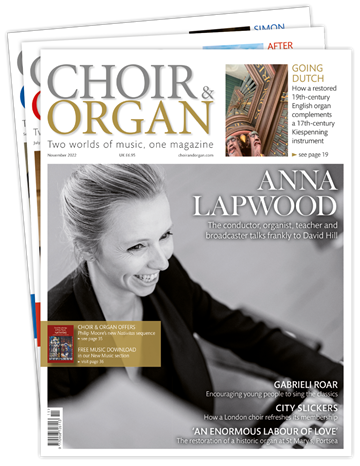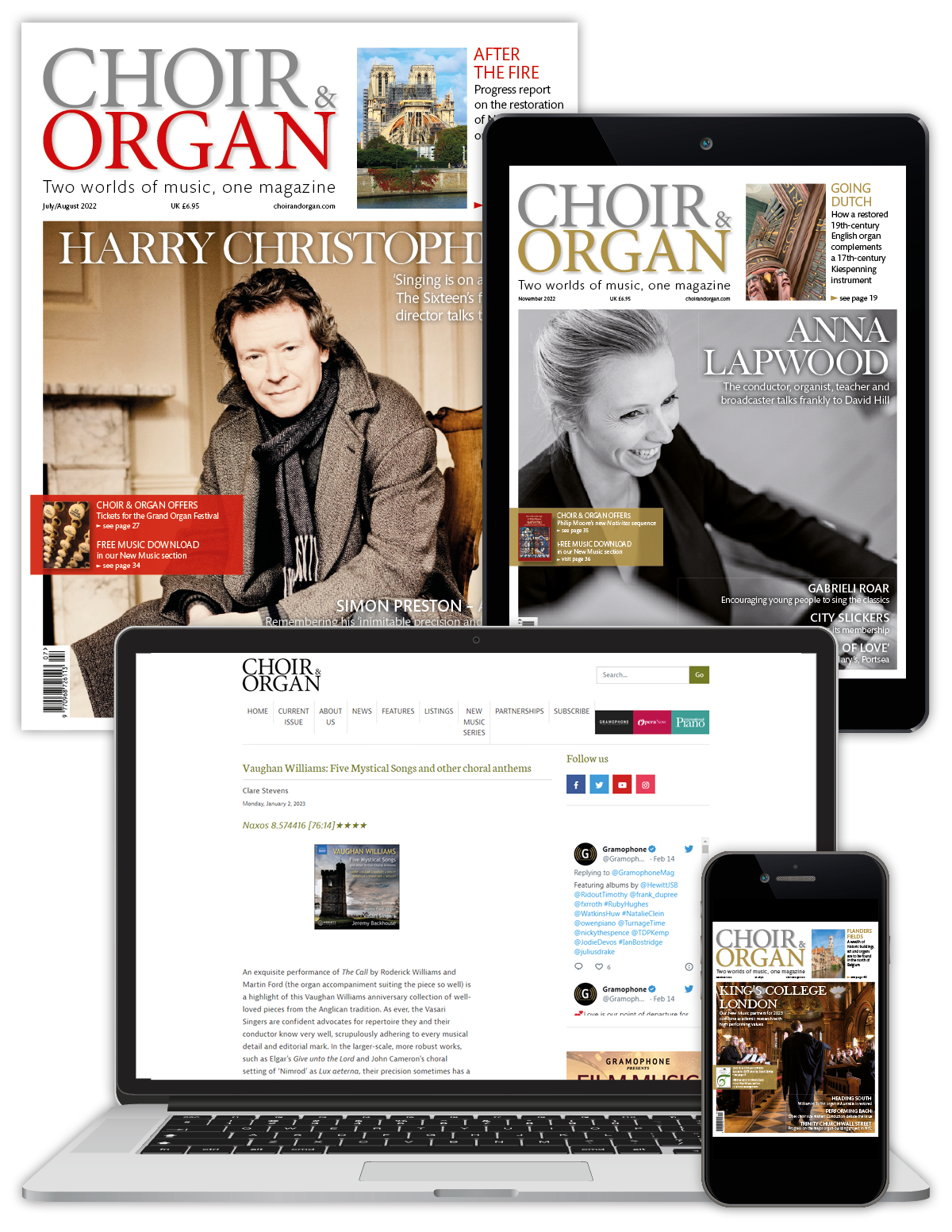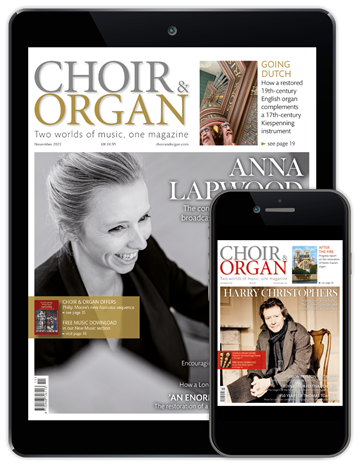Grandeur without bombast: designing a cathedral-size English organ in Connecticut
Jonathan Ambrosino
Monday, January 2, 2023
Risk-taking has paid off in the design of a cathedral-size English organ in Connecticut, writes Jonathan Ambrosino. Photos by Joanne Bouknight

Christ Church Greenwich, Connecticut, has long been known as a choral parish of uncommon engagement. When I went there in 2014 to survey the former organs, it seemed everyone I met either sang in the choir, had sung as a child, now had children in the choir, or were determined theirs would soon sing. The new Harrison & Harrison seems a fitting appurtenance, an organ of cathedral proportion in a parish church that is anything but parochial in this, among the most affluent of US towns.
This single new instrument, a lavish but disciplined 81 ranks, supplants a pair of 1970s Austins, chancel and gallery, which totalled 116 ranks. The new Harrison, the firm’s largest all-new organ in ages, defines itself within the English cathedral tradition (an admittedly slippery term) in which accompaniment is the driving ideal. The stop list pivots between orthodoxy of concept – no manual extension, only limited borrowings – and flexibility of deployment in the space available.
Built in 1910, Christ Church is a cruciform building of neo-Gothic aspect, with plaster painted to resemble stone, broad transepts and dryish acoustics. The former chancel organ occupied a left-hand chamber, whose bowling-alley-cum-deathtrap arrangement was rescued by two transept arches. The former organ adopted a version of the Southwark Cathedral solution: lesser resources pointed towards the chancel, stronger ones aimed at transept and nave. An independent two-manual gallery organ filled in the gap.

The main transept and chancel cases on the left-hand side of the choir stalls; the Swell case and console lie on the opposite side
Apart from a chamade, in the new organ any gallery-based tone was abandoned in favour of concentration at the east. A key solution was to heighten the main chamber and front it with a substantial case. Within lie the Pedal basses, Solo and unenclosed Choir, the latter sited in the chancel case just behind the stalls. Great, Pedal upperwork and Tuba take pride of place within the transept case. On the right, a new chamber runs the transept’s full depth. Directly behind this façade sits the Harp, with the Swell continuing. The Solo French Horn and Orchestral Trumpet live here, available to help with the antiphonal cooking.
This right-hand chamber responds to several impulses. Not only would the choir benefit from tone either side of the stalls, but a bigger overall footprint allowed a design entirely on one level without crowding the left space. As with the transept case, it took courage to push for the right chamber; and with courage came risk. Spreading tone the full width of such a space invites challenges of cohesion, especially without abundant acoustics to help things gel.
In the end, these architectural changes have paid off, offering the simultaneous advantages of open and enchambered setups. Avoid the Great and keep the nave shutters closed, and one can register with aplomb and little fear of swamping. Engage the nave shutters and introduce the Great, and the tone has a direct access to the nave few chambered organs enjoy.
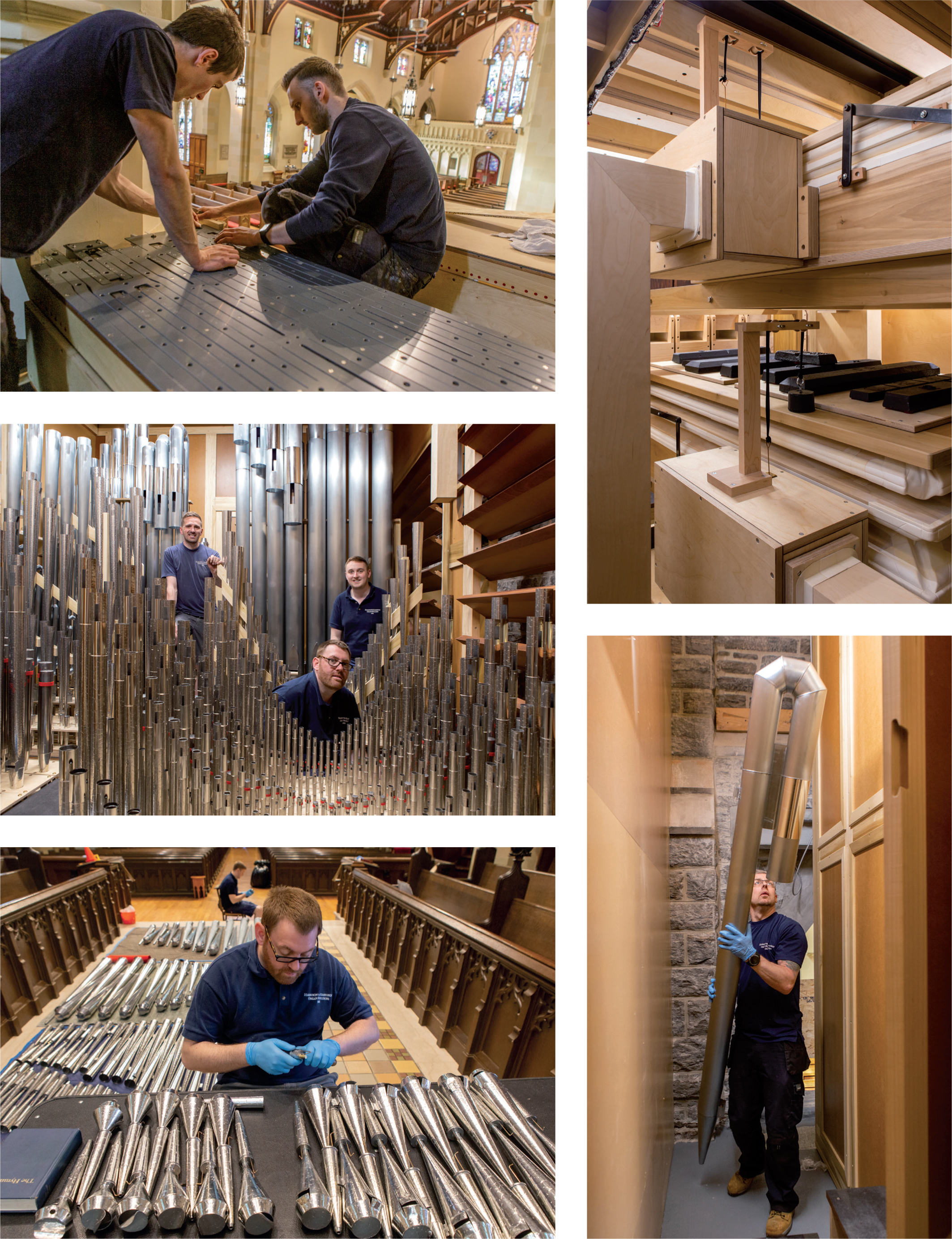
(clockwise, from top left) Beginning installation of the Great transept reservoirs; Great and Solo reservoirs completed; a Swell Contra Gamba pipe is lifted in; the voicing team inspect the newly arrived Swell pipework; the voicing team (with H&H managing director Andrew Scott, centre) among the pipes of the Swell division
It’s tempting to view this endeavour as a bid, in 2022, to mimic the iconic 1912 Harrison at St Mary Redcliffe, Bristol. The stop lists are more than similar, even down to some of Redcliffe’s dislocation of orchestral voices. But the tone at Greenwich is only occasionally as nostalgic as its specification might imply. The departments balance generally along the mythic cathedral model, in which the Great is king, the Swell lively but subsidiary, the Choir mild but with some Positive-like aspects, the Pedal broadly supportive. In particular, the Choir tells us that, yes, the 20th century actually occurred; atop mild and pleasant foundations sits a salad bar of principal-toned upperwork and a do-everything Cremona. Where one might presume the Solo chorus to be something more powerful than the Great’s, it actually lies between those of the Swell and Great, functioning as a second Swell on the opposite side and a bridge that justifies the Great’s strength. The excellent orchestral voices provide the most retrospective tonalities; transfers make them even more deployable.
Each box has chancel- and nave-facing shutters, and four shoes permit individual control as desired. A straightforward matrix controls the shutter assignments, which can be set on generals to suit the moment. (Somewhere, Peter Richard Conte is beaming.) These selections affect the organ’s character more than most ‘nave shutters on’ situations, particularly given the Swell box’s long, deep shape. Disengage the nave shutters and the Swell tames right down for weekday use. Switch them on, and now especially the reeds (the organ’s brightest) have something to add to the full ensemble. In some sense, one is reminded, yes, of Redcliffe, but also of the Taylor & Boody at Grace Church, New York, with its clearly right-hand Solo in a former transept chamber, by turns singling out and blending in. Here in Greenwich, careful registration can play up the novelty of solo lines darting left and right. And, despite the dry acoustics, left and right do merge plausibly into a unified tutti.
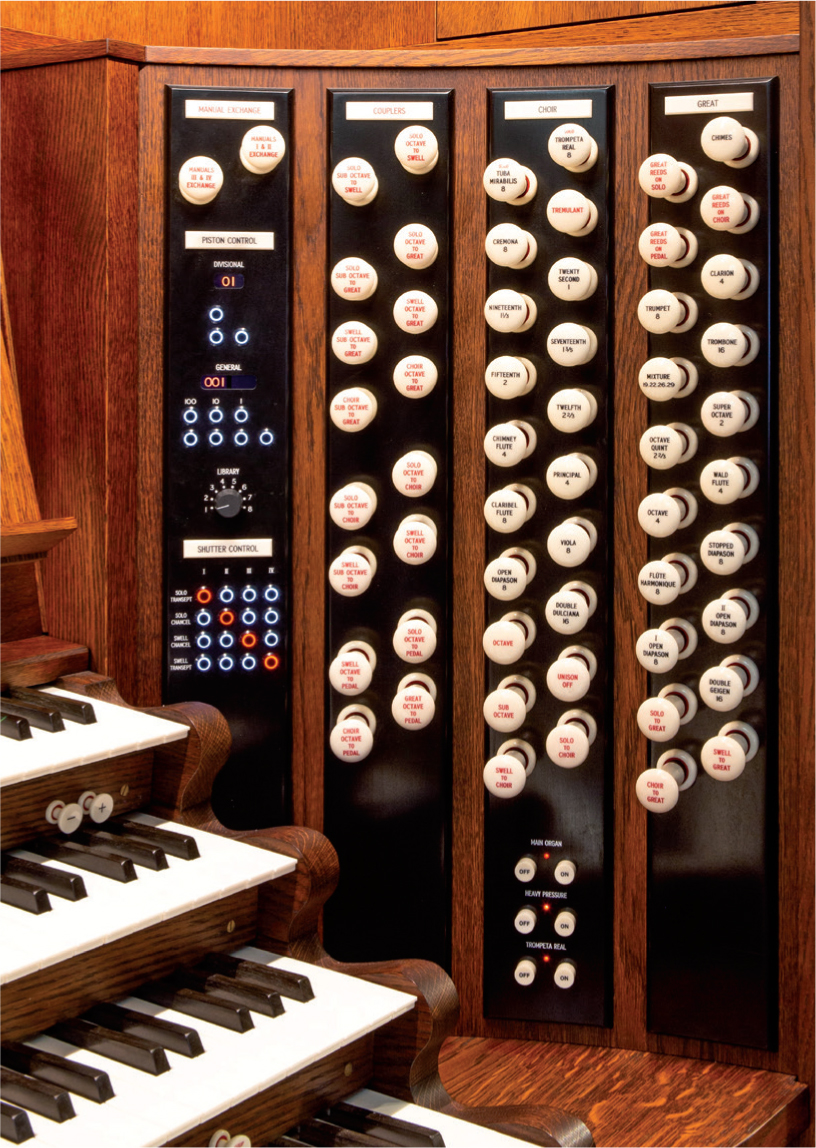
Right stop jamb showing the matrix to control chancel and nave shutter assignments
(clockwise, from top left) The Solo Cor Anglais; Swell Lieblich Celeste; Trompeta Real on the west wall; Pedal Contra Trombone and Open Wood; Swell Oboe
A curiosity of the stop list complicates seamlessness at the low end. Perhaps you start on the Swell Lieblich and its calm celeste, less kinesthetic than Westminster Cathedral’s but still entrancing. Or maybe you begin on the strings, mild and ethereal in the received English manner. Where you go next is a question mark. Not the Choir Viola: warm and good, but a bit loud. Nothing on the Great, and certainly not the Solo Violes, a stand-alone effect whose slightly cranky assertiveness seems more American than anything in the lacy, celestial Arthur Harrison mould. Maybe the Choir 16ft Dulciana or cool Solo 16ft Bourdon up an octave? Ah, but that’s awkward. Once past this conundrum, however, the organ is nicely worked out dynamically. Mezzo voices have character without sacrificing blend, and work into a mélange from which things build up handsomely. The grand Tuba rides far above the rest, so much that the Great reeds will be more appropriate, and plenty, for workaday fanfare moments.
The console is introduced beneath the case fronting the Swell chamber, a frankly awful position until you consider all the other, even worse alternatives. It teems with useful controls, sanely laid out and entirely ignorable for those disinclined to exploration. US organists would benefit from a full introduction to the useful UK features of separate memory banks for divisional pistons and the option of through-coupling. US organists may, however, wonder why the sole general thumb pistons are so far away, up in the Solo bass keyslip. Although electrically controlled, the swell shoes also operate weighted traces to mimic the feel of mechanical connection. While this might read as affectation for some US players, it’s a gorgeous touch for those accustomed to mechanical linkage and made nervous by the usual light American shoe.
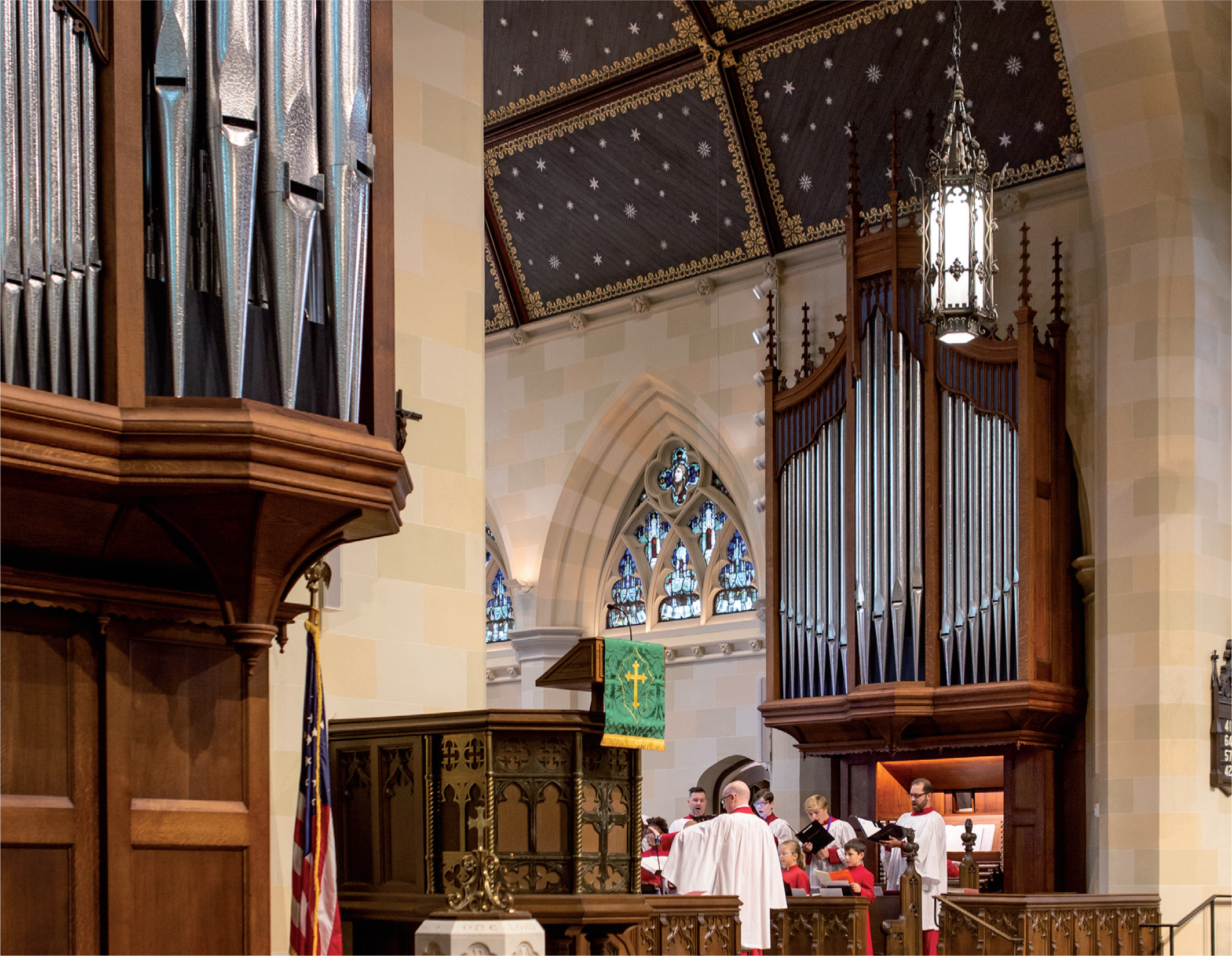
Cases on both sides of the choir stalls envelop the singers with sound and allow ample room for the organ’s single-level layout
Is the organ under-brilliant? The flue choruses terrace in a sensible fashion, with mixtures clearly present and by no means overdone. But this stratum of tone seems subservient once the reeds arrive – a syndrome we know from the early 20th century in England and America. But Greenwich isn’t so darkly foundational, high-pressure, or chesty as those earlier examples, whose ultimate excitement derives as much from a brawn and heft not really present here. The reed choruses all ride in the lane of clean trumpet tone, keeping distance from anything Tromba-ish on the one hand or French-ish on the other. This quality of tempered brightness makes the instrument exceedingly agreeable to sing to, either as a chorister or a congregant. It can grow strong, quite strong indeed, without ever invading that place your voice strives to fit into.
All the same, the quality denies the tutti ultimate pizzazz. The flue material with drive seems largely at 8ft pitch, with registers above having less treble push. Even the mix-and-match Choir chorus seems uncertain on this score. In place of silvery treble, the small pipes sound a bit chunky and unclean. The bass lacks no such conviction. Held over from the former organ, the 32ft Bourdon had its cut-ups and pressures raised, and now works splendidly. The Open Wood is as effective as the peculiar acoustics permit, in some spots titanic, in others merely strong. The hard-working metal basses tell the acoustical story in a different way. And, how wonderful to see a proper Pedal principal chorus nicely balanced to the Great’s.
This organ should wear well. The considerable effort to refashion the available space has paid off in an instrument that looks handsome, develops an ensemble that isn’t shouting to make its point, envelops without overwhelming, and offers grandeur without bombast. All in all, a dignified addition to the scene.




